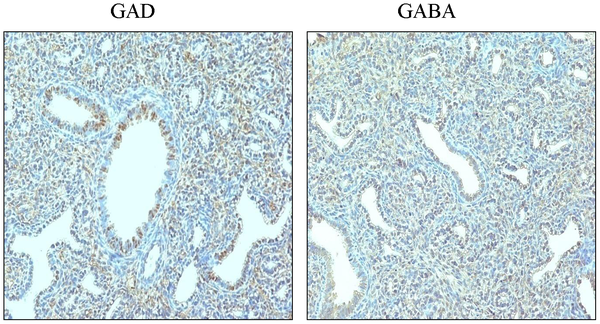User:Z3372817: Difference between revisions
No edit summary |
No edit summary |
||
| Line 5: | Line 5: | ||
Lab 3 --[[User:Z3372817|Z3372817]] ([[User talk:Z3372817|talk]]) 11:13, 20 August 2014 (EST) | Lab 3 --[[User:Z3372817|Z3372817]] ([[User talk:Z3372817|talk]]) 11:13, 20 August 2014 (EST) | ||
Lab 4 --Absent | |||
http://www.ncbi.nlm.nih.gov/pubmed | http://www.ncbi.nlm.nih.gov/pubmed | ||
| Line 118: | Line 120: | ||
4. [https://m.youtube.com/watch?v=iktuxwfGpWE YouTube] | 4. [https://m.youtube.com/watch?v=iktuxwfGpWE YouTube] | ||
Video explaining early respiratory development | Video explaining early respiratory development | ||
==Lab 4 Assessment== | |||
''Identify a paper that uses cord stem cells therapeutically and write a brief (2-3 paragraph) description of the paper's findings. | |||
There are a number of developmental vascular "shunts" present in the embryo, that are closed postnatally. Identify these shunts and their anatomical location.'' | |||
Revision as of 13:14, 28 August 2014
Lab Attendance
Lab 1 --Z3372817 (talk) 12:45, 6 August 2014 (EST)
Lab 2 --Z3372817 (talk) 11:10, 13 August 2014 (EST)
Lab 3 --Z3372817 (talk) 11:13, 20 August 2014 (EST)
Lab 4 --Absent
http://www.ncbi.nlm.nih.gov/pubmed
Lab Assessment 1
Research Article 1:
<pubmed>24992752</pubmed> This article tests the effect of traditional Chinese herbs on infertile women. The method employed was to conduct tests on 433 infertile women below the age of 42 and dividing the groups into test subjects, those who will be administered Chinese herbs, against the control. The groups were made up of 216 people and 217 in the respective groups. All subjects were given 1 out of 4 options of ultra-ovulation-promoting therapy to assist in the in-vitro fertilisation.
The main categories of measurement and the subsequent findings were:
| Category | Result |
|---|---|
| Endometrium thickness | Higher than control |
| Number of acquired eggs | No difference with control |
| Rates of normal fertility | Higher than control |
| High quality embryos | Higher than control |
| Biochemical and clinical pregnancy rate of subjects | Higher than control |
The findings showed an overall improved quality of fertility in these otherwise infertile women of the intervention group. The embryos also exhibited increased quality. This finding then suggested an improved success rate of IVF-embryo transplantation cycles and increased outcomes and safety of assisted reproductive technology.
Research Article 2:
<pubmed>23835722</pubmed> The effect of two different oxygen levels on embryo development was tested. The female gametes (oocyte) of 258 women were divided in a randomised study into 2 different groups; incubator of 5% oxygen concentration versus an incubator of 20% oxygen concentration. The purpose of the incubator is to ensure oxygen concentration is constant throughout the course of the experiment.
The matters of interest along with the clinical outcomes are as follows:
| Category | Result |
|---|---|
| Fertilisation | Same between groups |
| Cleavage | Same between groups |
| Embryo quality | Higher in 5% conc. group
(more blastomeres, more cycles of favourable embryos) |
| Blastocyst formation | Higher in 5% conc. group |
| Implantation | Higher in 5% conc. group |
| Pregnancy | Higher in 5% conc. group |
| Live birth rates | Higher in 5% conc. group |
The findings showed higher, greater quality embryos were seen in test subjects of the 5% oxygen concentration group. Smaller oxygen levels in incubation during embryo development was more favourable.
Lab Assessment 2
IHC image of mice fetal lung tissue showing the role of GAD and GABA in respiratory fetal development
Reference
Chintagari NR, Jin N, Gao L, Wang Y, Xi D, et al. (2010) Role of GABA Receptors in Fetal Lung Development in Rats. PLoS ONE 5(11): e14171. doi:10.1371/journal.pone.0014171 | PLoS One: Role of GABA Receptors in Fetal Lung Development in Rats
© 2010 Chintagari et al. This is an open-access article distributed under the terms of the Creative Commons Attribution License, which permits unrestricted use, distribution, and reproduction in any medium, provided the original author and source are credited.
- Note - This image was originally uploaded as part of an undergraduate science student project and may contain inaccuracies in either description or acknowledgements. Students have been advised in writing concerning the reuse of content and may accidentally have misunderstood the original terms of use. If image reuse on this non-commercial educational site infringes your existing copyright, please contact the site editor for immediate removal.
Lab Assessment 3
1. <pubmed>23431607</pubmed> Comparison between historical and current literature in regards to the development of the respiratory system
2. Developmental Biology, 6th edition By Scott F Gilbert. Swarthmore College Sunderland (MA): Sinauer Associates; 2000. ISBN-10: 0-87893-243-7
- Links: | Developmental Biology
Comparative embryology with detail on historical understandings of early respiratory development observed in various species. Accessible through PubMed.
3. Human Embryology and Morphology, 1902 By Arthur Keith London: Edward Arnold.
Historical images of past understandings on respiratory development
4. YouTube Video explaining early respiratory development
Lab 4 Assessment
Identify a paper that uses cord stem cells therapeutically and write a brief (2-3 paragraph) description of the paper's findings. There are a number of developmental vascular "shunts" present in the embryo, that are closed postnatally. Identify these shunts and their anatomical location.
